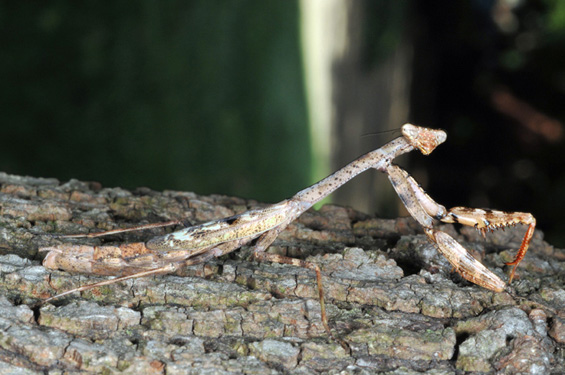
Common Name: Praying mantid
Scientific Name: Mantidae: spp
Status: Beneficial generalist predator
Beneficial Stage: Immature and adult
Biology: Praying mantids may be one of the most easily recognized insects. They have a large triangular-shaped head with two large, compound eyes and characteristic raptorial front legs that are normally held together as if in prayer. Bodies are long and narrow and have leathery wings that may or may not extend beyond the abdomen. Mantids vary greatly in size and can be anywhere from 2/5-12 inches long. Camouflage is very important to mantid survival and colors vary from light greens, to browns and pinks. Various species have evolved to not only blend with the foliage, but to mimic it, appearing as either living or withered leaves, sticks, tree bark, blades of grass, flowers, or even stones.
Praying mantids eat insects and other invertebrates such as beetles, flies, butterflies, crickets, grasshoppers, and even spiders. They pose on plants with their spiny front legs held in front of them, ready to strike and capture any insect that comes close enough to become its meal.
Value: Praying mantises are beneficial because they prey upon many other insects, some of which may be a threat to crops and vegetation.
|